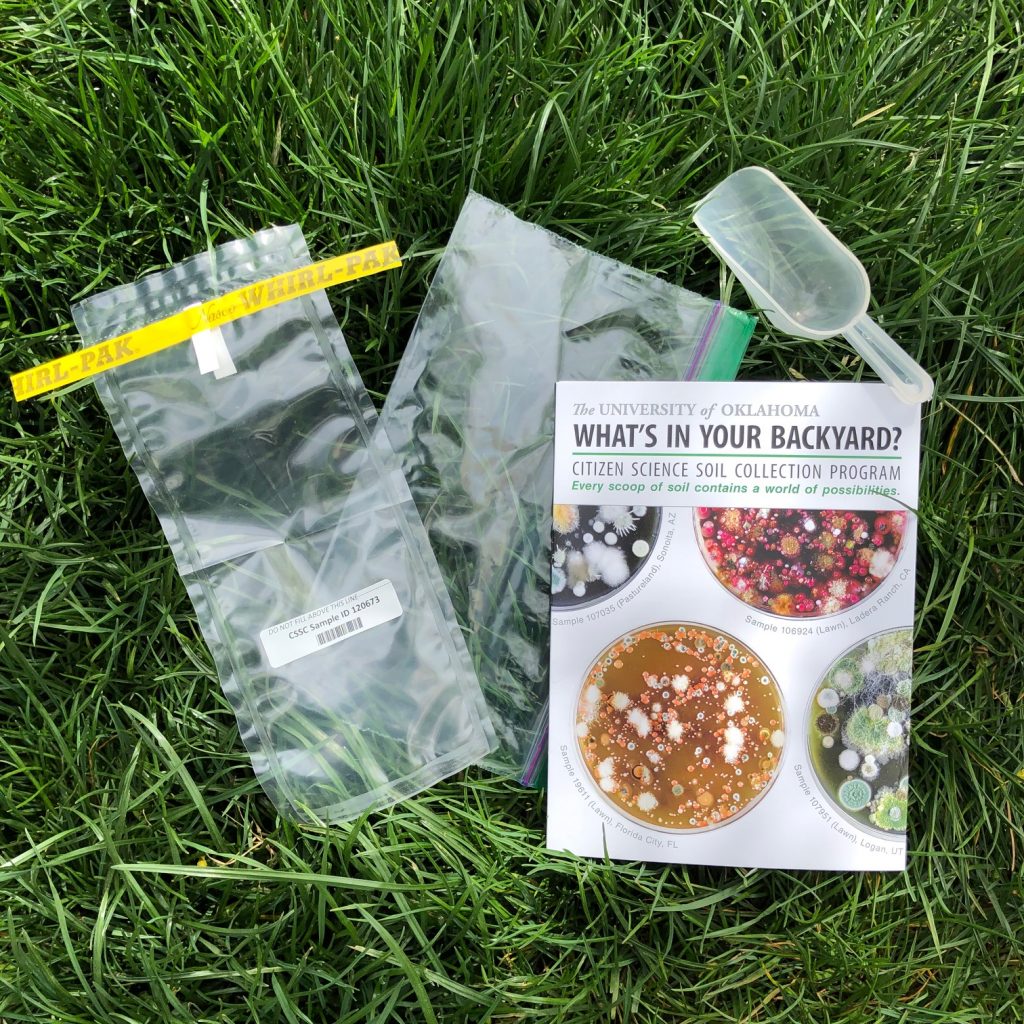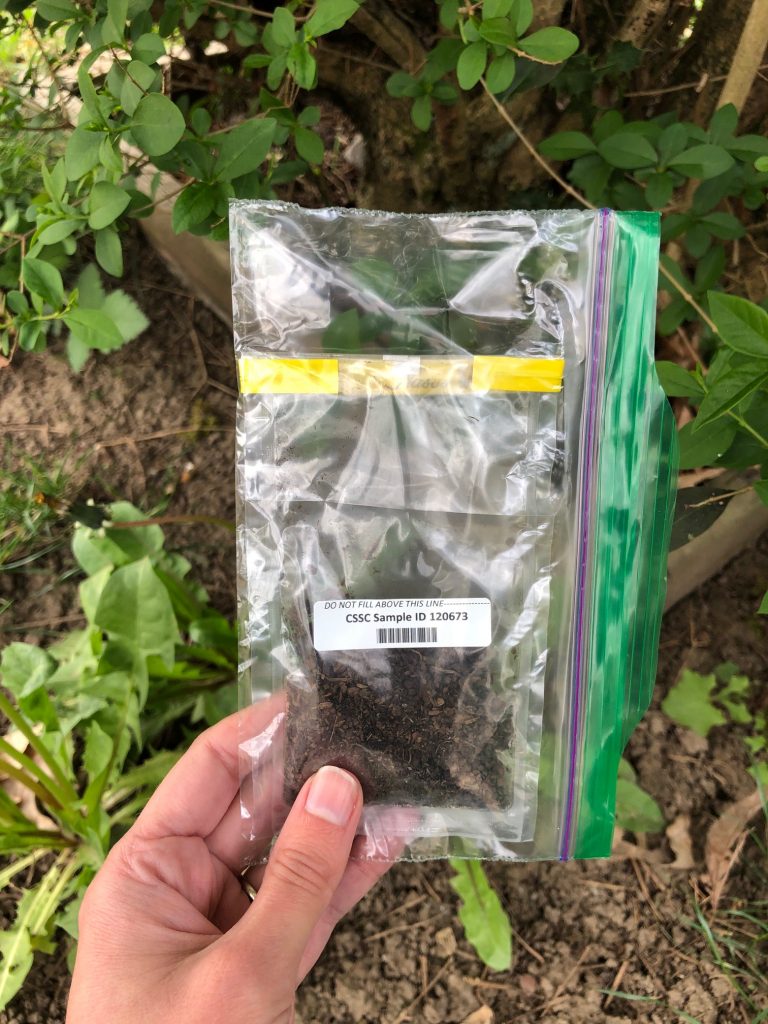Apr
20

Posted by Emily Hamstra on April 20th, 2020
Posted in: Citizen Science, K-12
Tags: citizen science, citizen science month, science education, scistarter
“Wouldn’t it be amazing if the cure for cancer is literally in our back yard?” asks Kathy M., a citizen scientist from Fort Myers, Florida. Through the University of Oklahoma’s What’s in Your Backyard?: Citizen Science Soil Collection Program, this could be possible.
Fungi, used many antibiotics and other medicines, is found in soil. Researchers need new fungi to create new medicine.

The What’s in Your Backyard program asks you to send a sample of your soil to researchers at the University of Oklahoma. One small sample of soil could include dozens of fungi. This means you could have fungi in your soil that leads to groundbreaking (ha!) new medicine.
So, I had to try it.
I requested a kit through the What’s in Your Backyard website, and received the kit in the mail 2 weeks later. The kit includes a small scoop, a plastic bag for the sample, an additional ziplock bag, clear instructions for collecting the soil sample, and a form to fill out with information about the sample.
The soil sample needs to be taken from an area of your yard doesn’t get a lot of traffic, isn’t carefully tended, and is free from chemical or biological hazards. Once I found just the spot, I followed the instructions for collecting the sample.

Next, I filled out the form included in the kit and sent the form and soil sample to the University of Oklahoma. Join me in following the progress of my soil sample by tracking sample #120673 on the project’s website.
What’s in Your Backyard is a simple project for all ages and is an excellent opportunity to learn and stay curious from home. The project website provides many fascinating resources, including; a behind the scenes look at the process for testing the soil samples, curriculum guides, fantastic fungi facts, and more.
It’s free to participate in this project. The University of Oklahoma accepts donations to cover the cost of the kit.